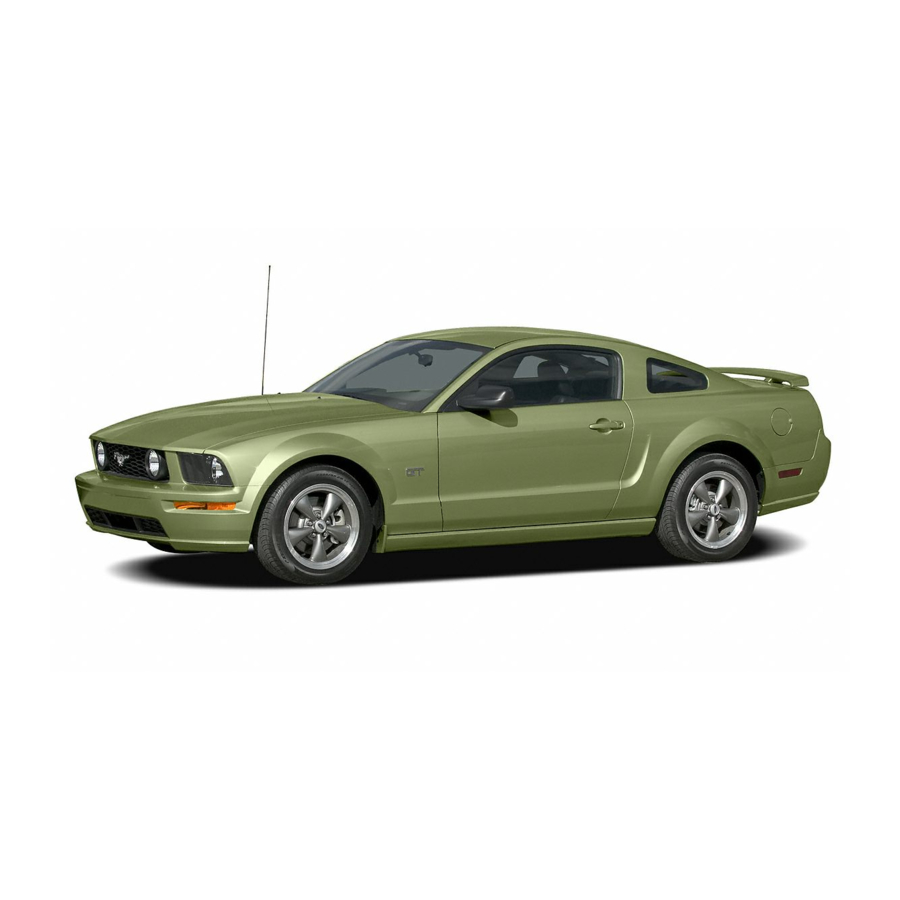
Ford 2006 Mustang Manuals
Manuals and User Guides for Ford 2006 Mustang. We have 2 Ford 2006 Mustang manuals available for free PDF download: Owner's Manual
Ford 2006 Mustang Owner's Manual (249 pages)
Ford Motor Company 2006 Ford Mustang Owner's Guide
Brand: Ford
|
Category: Automobile
|
Size: 2 MB
Table of Contents
-
-
-
Safety Belt12
-
Low Fuel13
-
High Beams14
-
Turn Signal14
-
Gauges15
-
Odometer16
-
Speedometer16
-
Tachometer17
-
Fuel Gauge18
-
Balance20
-
Fade20
-
Lights
32 -
-
-
Express down44
-
Express up44
-
Reset53
-
Setup Menu53
-
Display Mode55
-
Language55
-
Info Menu56
-
Fuel Used58
-
Keys61
-
Smart Locks61
-
-
Relock62
-
-
Rear Seats79
-
-
Beltminder90
-
Treadwear119
-
-
Tires120
-
Tire Care123
-
Damage124
-
Tire Wear124
-
Safety Practices125
-
Highway Hazards126
-
Tire Rotation126
-
Base Curb Weight133
-
Payload134
-
Cargo Weight135
-
Trailer Towing139
-
Hitches140
-
Preparing to Tow140
-
Safety Chains140
-
Trailer Brakes140
-
-
Starting143
-
Driving
143-
Brakes147
-
Traction Control149
-
Steering150
-
Using the Clutch156
-
Reverse157
-
-
-
Fuses and Relays161
-
Jump Starting173
-
Wrecker Towing178
-
At Home179
-
Away from Home179
-
-
Cleaning
186-
Exterior Chrome186
-
Waxing187
-
Paint Chips187
-
Engine188
-
Interior191
-
Underbody191
-
-
Opening the Hood194
-
Engine Oil198
-
Battery203
-
Engine Coolant205
-
Fuel Information211
-
Fuel Filler Cap213
-
Refueling213
-
Cleaner Air215
-
Fuel Quality215
-
Filling the Tank216
-
Habits217
-
Conditions218
-
Maintenance218
-
-
Index
237
Advertisement
Ford 2006 Mustang Owner's Manual (31 pages)
Brand: Ford
|
Category: Automobile
|
Size: 1 MB

